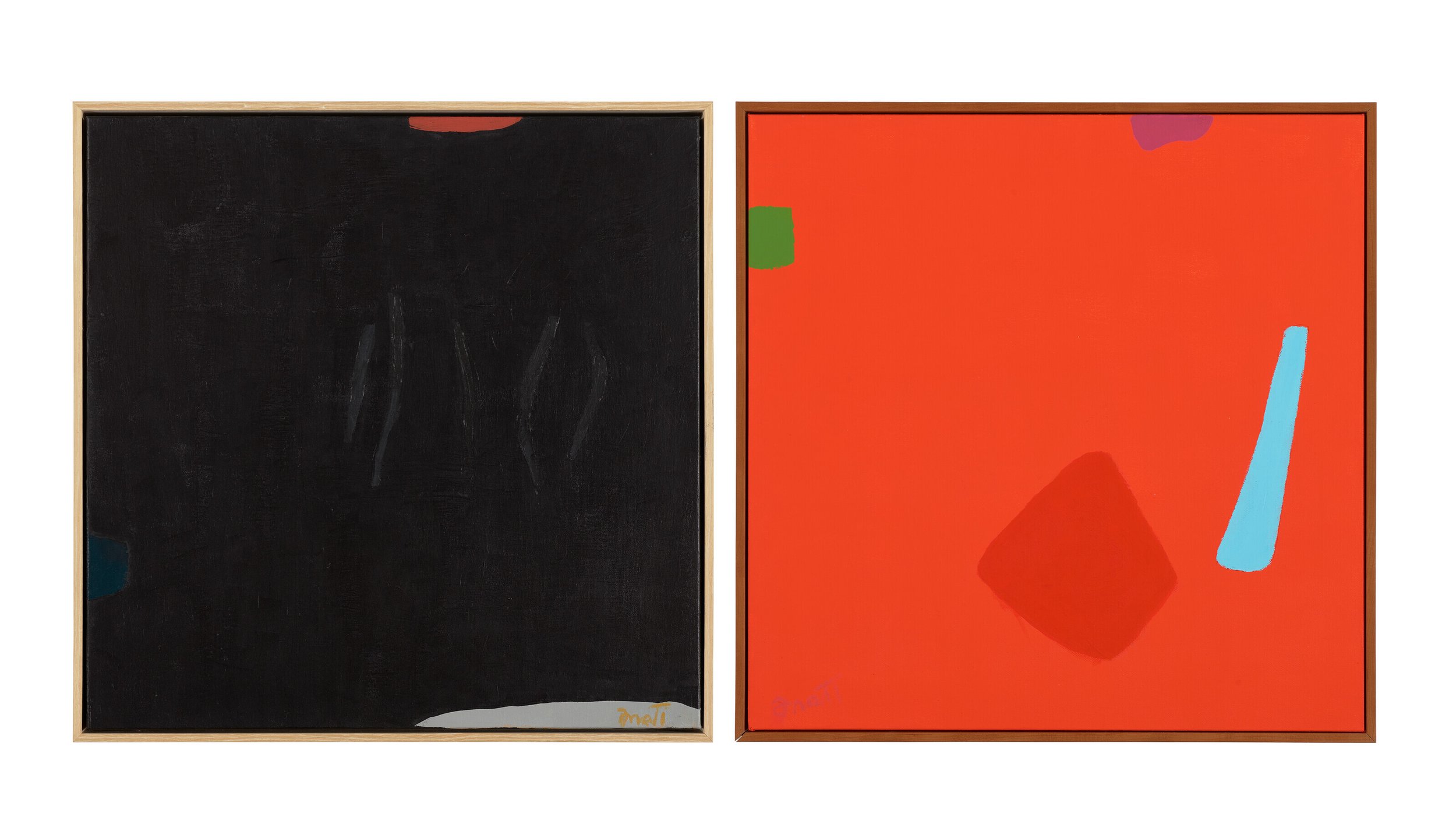Dorothy Fratt and the Power of Pure Color
Dorothy Fratt painted with a clarity that left no room for hesitation. Her colors were bold, direct, and carefully placed to create balance and movement. Nothing felt accidental. She made decisions with precision, letting color relationships dictate the structure of her work. Instead of layering texture or complex compositions, she focused entirely on how colors interacted, how they could shift perception, and how they held attention.
She studied at the Corcoran School of Art in Washington, D.C., before settling in Arizona, where she spent the majority of her career. The desert had an effect on how she saw color. The clarity of the light, the vastness of open space, and the contrast between sky and earth all filtered into the way she built her paintings. She never painted landscapes, but her color choices reflect the intensity of the environment around her.
Her surfaces were smooth, her edges crisp. She applied color in flat planes, allowing pure hue to define space. One color would sit beside another, vibrating at the meeting point, creating movement without the need for brushstrokes or shading. The simplicity of her compositions made every choice matter. Each painting was a study in how much could be expressed with the smallest number of elements.
Some of her paintings appear minimal, but nothing about them is empty. The space between colors is active, shaped by the push and pull of hue and contrast. Some colors seem to advance, others recede, creating depth without any need for perspective or recognizable forms. Her control over these effects allowed her to create a sense of energy without gesture, structure without rigidity. The paintings don’t feel static. They hold attention, not because of complexity, but because of how precisely they are built.
She worked outside the major art centers at a time when New York dominated the conversation. While other artists were focused on gesture and expression, she refined her approach to color and space. Her work aligned with Color Field painting, but she was never tied to a movement. She focused on painting, teaching, and exhibiting in her region, working consistently and developing her practice without the pressure of trends.
Fratt’s work remained relatively underrecognized for much of her life. She was known and respected within Arizona, where she taught and exhibited, but her work wasn’t widely shown in larger markets. In recent years, more attention has been given to artists who worked outside major cities, developing distinct voices without being part of a larger scene.
There is a confidence in her work that never wavers. She knew exactly what she was doing with color. Her work creates an experience, one that shifts depending on how long you look and how colors interact with each other in real time.



